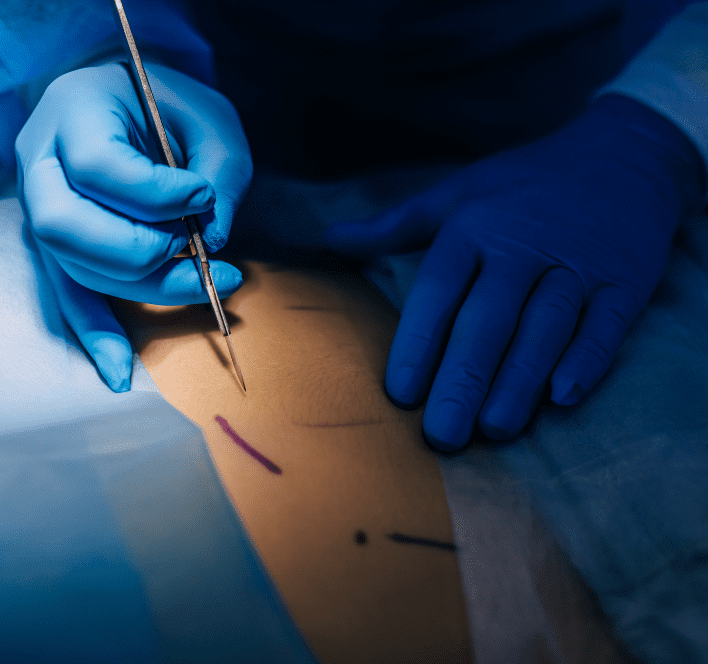Degenerative disc disease and other spinal disorders that weaken vertebrae in the spine can impact your ability to work, take care of your kids, and live a life free of pain. Injuries, aging, and everyday wear and tear can contribute to the development of degenerative disc disease, as well as more severe conditions such as spinal stenosis and osteoarthritis
Degenerative discs can cause crippling pain, from numbness and tingling to extreme discomfort in the neck and back. In mild cases, it may be possible to treat your pain with non-invasive treatments like physical therapy and over-the-counter anti-inflammatory medicines. When these practices fail to effectively reduce pain, artificial disc replacement surgery may be your best option.
Artificial Disc Replacement Procedure
Artificial disc replacement surgery is performed by removing the damaged disc and replacing it with a disc that resembles the natural function of the original disc. The artificial disc is made of metal or a compound of metal and plastic. The produce can take anywhere between one to two hours to complete and is performed by making a small incision in the affected area, allowing the surgeon to expose the spine without disrupting any nerves. Once the artificial disc is secure, the surgeon will stitch up and bandage the incision, and you will be on your way to recovery.
Recovering Process After Artificial Disc Replacement Surgery
The following covers what to expect from the recovering process starting on the day of surgery and after surgery.
Day of Surgery
Although the surgery itself can relieve your pain, it’s critical that you follow the set of instructions your physician provides you to expedite your recovery. One of the major benefits of this surgery is that it can be conducted on an outpatient basis, meaning you don’t have to be hospitalized overnight. After the procedure, your physician may suggest wearing a post-operative brace to provide support to your spinal column; however, that is dependent on which disc had replaced. You’ll also have a surgical bandage over the incision areas that’ll need to be changed and cleaned up to prevent an infection. Additionally, due to the side effects of anesthesia, a friend or relative will need to drive you home.
After Surgery
As for patient recovery, everyone is unique. Generally, people return to full activity in 6 weeks, but others require more time. Those with sedentary jobs may be able to get back to work within a week or two, but again, this largely depends on the type of disc being replaced and a person’s pain tolerance. Tylenol and other anti-inflammatory medications are helpful to ease some pain, but your physician may prescribe a prescription medication. However, this is usually not needed.
Once you can perform activities independently, your doctor will likely recommend following physical therapy and a diet plan to promote faster and quality healing. You will receive a list of strengthening exercises as you start to regain mobility. Your physician will also give you a list of activities you should refrain from doing and inform you of any complications you may need to beware of.
Consider Artificial Disc Replacement at a Top Spine Center
The medical team at NJ Spine & Orthopedic has a 98% success rate in the performance of artificial disc replacement surgery. We use industry-leading technology to provide our patients with a superior medical experience, striving to ensure our patients as comfortable as possible. Don’t suffer another minute in pain. Reach out to us to see how we can help.
Here at NJ Spine & Orthopedic, our award-winning medical team will provide you with the tools you need to navigate your health care needs. Our focus is always on you. Learn more about the benefits of an artificial disc replacement by calling (866) 272-9271 or complete our contact form today!

